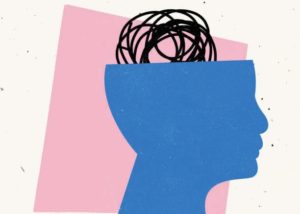- Home
- /
- Lifestyle
- /
- The Sleep
- /
- Sleep Restriction: Brain, Body,...
- /
- Sleep Restriction: Brain, Body,...
- 1. Understanding Sleep Restriction
- 2. The Physiological Toll of Sleep Restriction: Unraveling the Complex Biochemical Symphony
- 3. Cognitive Consequences of Sleep Restriction: Unveiling the Shadows in the Mind’s Theater
- 4. Emotional Landscape of Sleep Restriction: Navigating the Turbulent Night
- 5. Sleep Restriction Across the Lifespan: From Cradle to Golden Years
- 6. Societal Ramifications of Sleep Restriction: Unraveling the Threads That Bind Us
- 7. Strategies for Mitigation: Navigating the Night Successfully
In the relentless march of modern life, where time is often regarded as a scarce commodity, one aspect often overlooked in the pursuit of productivity is the profound necessity of a good night’s sleep. Sleep, that restorative sanctuary where the mind rejuvenates and the body heals, is increasingly sacrificed on the altar of perpetual busyness. It is within this paradoxical landscape that we find ourselves delving into the intricate complexities of sleep restriction—a phenomenon that extends far beyond the ticking of the clock and into the very essence of our well-being.
Defying the Notion of Restful Repose
Sleep restriction is not merely a reduction in hours spent beneath the veil of night; it is a conscious or inadvertent curtailment of the time allotted for restful repose. As we embark on this exploration, we must navigate the delicate balance between the quantitative aspects of sleep duration and the qualitative nuances of true rest—a nuanced dance where every minute holds significance in the intricate choreography of our body’s nightly regeneration.
The Pervasive Impact on Well-Being
To fully comprehend the consequences of sleep restriction, we must recognize that it is not an isolated concern but a pervasive force that reverberates through the corridors of our mind, body, and, indeed, beyond. This comprehensive journey seeks to unravel the multifaceted nature of sleep restriction, examining its physiological toll, cognitive consequences, and the intricate landscape of emotions it stirs. Beyond the individual, we explore how the tendrils of sleep restriction reach into the fabric of society, influencing workplace dynamics, public safety, and the very core of human relationships.
A Symphony of Vitality and Resilience
As we navigate the night in the context of sleep restriction, we uncover a symphony of vitality and resilience—a harmonious lullaby that, when respected, orchestrates a rhythm conducive to physical health, mental acuity, and emotional well-being. The call to prioritize and understand the importance of sufficient sleep becomes not just a matter of personal well-being but a societal imperative. In delving into the profound impact of sleep restriction, we aim to shed light on the silent consequences that unfold in the darkened hours, inviting all to recognize and honor the sanctity of the night for the benefit of mind, body, and beyond.
1. Understanding Sleep Restriction
1.1. Quantitative vs. Qualitative Aspectsof Sleep Restriction: Balancing the Clock and the Quality
In the realm of sleep restriction, the discussion often revolves around the quantitative aspects — the number of hours allotted for rest. However, a comprehensive understanding requires us to explore not just the ticking of the clock but the qualitative dimensions of our nightly repose.
a. Quantitative Aspects: The Ticking Clocks of Rest
Quantitatively, sleep restriction is marked by a reduction in the total hours of sleep. Whether by choice or circumstance, individuals find themselves allocating insufficient time to rest, curbing the natural course of the body’s regenerative processes. This reduction in sleep duration often results in a cumulative sleep debt, a silent burden carried day by day, affecting both mental and physical performance.
The quantitative lens compels us to ask: How many hours are we dedicating to rest, and what is the cumulative toll of our collective sleep debt? By examining the clock, we gain insight into the stark reality of sleep restriction, where the numbers reflect a deficit that may go unnoticed until its impact becomes unmistakable.
b. Qualitative Nuances: Beyond the Tick-Tock of Time
However, the story of sleep restriction extends beyond the numerical count of hours. The qualitative aspects, often overshadowed, hold equal significance. Considerations of sleep quality, depth of rest, and the presence of uninterrupted sleep cycles are integral components of a restful night.
Qualitative aspects challenge us to explore the conditions of our sleep environment, the presence of disturbances, and the efficacy of our sleep hygiene practices. It prompts questions such as: Are we experiencing restorative sleep, or is our night marked by restlessness and frequent awakenings? The qualitative dimensions beckon us to consider not just the quantity but the richness of our nocturnal repose.
c. Balancing the Clock and the Quality
The delicate interplay between quantitative and qualitative aspects emphasizes the importance of a holistic approach to sleep. It’s not merely about extending the hours spent in bed but ensuring that those hours are characterized by the depth and quality essential for rejuvenation. Achieving a balance between the ticking of the clock and the richness of rest allows us to navigate the realm of sleep restriction with a nuanced understanding—one that transcends mere numerical calculations and considers the intricate tapestry of a truly restful night. In exploring this balance, we gain insight into the dimensions of sleep restriction that often escape the conventional quantification, uncovering a more holistic understanding of the profound impact on mind and body.
1.2. Lifestyle Factors Influencing Sleep Duration: Unraveling the Threads of Rest
In the intricate web of sleep restriction, lifestyle factors emerge as influential threads, intricately woven into the fabric of our nightly repose. Beyond the numerical considerations of sleep duration, the choices we make during waking hours play a pivotal role in determining the quantity and quality of our sleep.
a. Daily Routines and Sleep Hygiene
The patterns of our daily lives form the foundation upon which restful nights are built. Establishing consistent sleep-wake schedules, cultivating bedtime rituals, and creating a conducive sleep environment are crucial aspects of good sleep hygiene. Yet, in the hustle and bustle of modern living, these fundamental practices are often overshadowed. Lifestyle factors, such as irregular work hours, excessive screen time, and inconsistent bedtime routines, may inadvertently contribute to the erosion of the sleep duration we so desperately need.
About ideal conditions for deep sleep read here: How to sleep well?
By delving into the nuances of our daily routines, we unravel the impact of lifestyle choices on the length and quality of our nightly repose. The habits we cultivate during waking hours echo in the quiet spaces of the night, shaping the narrative of our sleep duration.
b. Caffeine, Technology, and the Dusk of Sleep
Modern conveniences come with a price, and the allure of caffeine and pervasive technology has cast its shadow on our sleep patterns. Lifestyle choices, such as consuming caffeinated beverages close to bedtime or engaging in late-night screen scrolling, disrupt the delicate balance required for a seamless transition into sleep. Unraveling these lifestyle threads reveals how seemingly innocuous choices made in the twilight hours can lead to a compromise in the duration and depth of our nightly rest.
c. Work-Related Stressors and Time Constraints
The demands of a hectic work life, coupled with societal expectations of constant productivity, often result in a race against time. Work-related stressors and time constraints become significant lifestyle factors contributing to sleep restriction. The pressure to meet deadlines, work long hours, or navigate shift work introduces stress into the equation, impacting both the ability to fall asleep and the total hours dedicated to rest.
By dissecting these lifestyle factors, we gain a deeper understanding of the intricate dance between waking and sleeping hours. The choices we make during the day become pivotal determinants of the duration and quality of our nightly repose. In navigating the landscape of sleep restriction, acknowledging and addressing these lifestyle factors becomes a crucial step toward fostering a holistic approach to sleep—one that embraces not only the ticking of the clock but the lifestyle choices that shape the contours of our restful nights.
1.3. Consequences of Sleep Restriction: Unveiling the Ripples Across Mind and Body
In the tapestry of sleep restriction, consequences unfold like ripples, extending their influence far beyond the confines of the night. Understanding the profound impact on both the mind and body requires a closer examination of these consequences, each thread contributing to the intricate narrative of sleep-deprived realities.
a. Cognitive Impairment: consequences of sleep lack
The cognitive consequences of sleep restriction are stark and immediate. The fog of sleep debt shrouds the mind, impairing cognitive functions such as memory, attention, and problem-solving. As the night’s rest is curtailed, the ability to consolidate information and navigate complex mental tasks becomes compromised. Unveiling these cognitive consequences prompts a critical reflection on the toll that insufficient sleep exacts on our daily mental acuity.
b. Emotional Turmoil: The Wake of Sleep Deprivation
Sleep restriction casts its emotional shadow, stirring turmoil within the delicate balance of mood and stress resilience. Increased irritability, heightened emotional reactivity, and a greater vulnerability to stressors become the emotional fallout of sleep deprivation. These consequences illuminate the intricate interplay between the restorative nature of sleep and emotional well-being, urging us to consider the emotional wake we navigate when sleep becomes a restricted commodity.
c. Metabolic Disruptions: The Weight of Sleep Loss
The consequences of sleep restriction extend to the metabolic realm, influencing appetite regulation and weight management. Disruptions in hormonal balance, including increased levels of ghrelin (the hunger hormone) and decreased levels of leptin (the satiety hormone), may contribute to overeating and weight gain. Understanding these metabolic consequences prompts a reevaluation of the interconnectedness between sleep, hormones, and the body’s delicate balance.
d. Immune Suppression: The Dimming Night Watchman
Sleep is a critical time for immune function, and sleep restriction dims the efficacy of the body’s night watchman. The suppression of immune activity heightens the vulnerability to infections and compromises the body’s ability to mount an effective defense. Unraveling the consequences on immune function unveils the silent toll sleep restriction exacts on our resilience against external threats.
e. Cardiovascular Strain: The Nocturnal Symphony of the Heart
Beyond the immediate, sleep restriction’s consequences resonate within the chambers of the heart. Elevated blood pressure, increased heart rate, and disruptions in the circadian rhythm contribute to cardiovascular strain. Understanding these consequences prompts a consideration of how nightly rest, or the lack thereof, shapes the rhythmic symphony of cardiovascular health.
In exploring the consequences of sleep restriction, we recognize that its impact is not isolated but woven into the very fabric of our daily existence. The ripples extend, touching cognitive realms, emotional landscapes, metabolic pathways, immune fortifications, and the beating heart itself. As we navigate this intricate terrain, we gain a profound appreciation for the interconnectedness of sleep and well-being, prompting a collective call to prioritize the sanctity of the night for the benefit of both mind and body.
2. The Physiological Toll of Sleep Restriction: Unraveling the Complex Biochemical Symphony
In the quiet realms of the night, beneath the veil of sleep, the body orchestrates a complex symphony of physiological processes. Sleep restriction disrupts this delicate harmony, setting off a cascade of reactions that reverberate through every fiber of our being. To comprehend the profound impact on the body’s intricate systems, we must delve into the physiological toll exacted by the curtailment of nightly repose.
2.1. Hormonal Disruptions: The Dance of Appetite and Metabolism
Sleep restriction disrupts the hormonal ballet that regulates appetite and metabolism. Ghrelin, the hunger hormone, surges, while leptin, responsible for signaling satiety, diminishes. The consequence? Increased cravings and a predisposition to overeating. Unraveling these hormonal disruptions provides insight into how sleep restriction threads itself into the intricate fabric of our metabolic health, potentially contributing to the global rise in weight-related issues.
2.2. Immune Function Suppression: Weakening the Night’s Sentinel
The night serves as a crucial time for the immune system to mount its defenses. Sleep restriction, however, weakens the body’s sentinel, suppressing immune function and compromising the ability to fend off pathogens. As we unveil the consequences on immune function, the implications become clear: a compromised defense against infections and a heightened susceptibility to illnesses.
2.3. Stress Response Escalation: Amplifying the Nightly Tumult
Sleep restriction amplifies the body’s stress response, triggering an escalation in cortisol levels. The consequences extend beyond the psychological realm, influencing cardiovascular health and contributing to systemic inflammation. Understanding the heightened stress response unravels the intricate ways in which sleep restriction fans the flames of physiological tumult within the body.
More about cortisol influence on the sleep read in the article: Cortisol and Sleep
2.4. Cardiovascular Strain: Disrupting the Nocturnal Rhythms
The cardiovascular system, a rhythmic conductor of the body’s circulatory symphony, faces strain under the influence of sleep restriction. Elevated blood pressure, increased heart rate, and disruptions in the natural circadian rhythm become the consequences of nightly rest curtailed. Peeling back these cardiovascular consequences prompts contemplation on how sleep, or the lack thereof, shapes the health of our most vital organ.
About diet for decreasing high blood pressure read in the article: Reducing high blood pressure
2.5. Metabolic Imbalance: The Nocturnal Ballet of Blood Sugar
Sleep restriction contributes to metabolic imbalances, impacting the body’s ability to regulate blood sugar levels. Insulin sensitivity diminishes, setting the stage for potential insulin resistance and Type 2 diabetes. Unraveling these metabolic consequences unveils the intricate dance between sleep and metabolic health, urging us to consider how the nocturnal ballet influences the body’s delicate equilibrium.
In dissecting the physiological toll of sleep restriction, we confront the intricate interplay between the nocturnal realm and the body’s intricate systems. The consequences, from hormonal disruptions to immune suppression and cardiovascular strain, illuminate the pervasive nature of sleep restriction’s impact. As we navigate this physiological landscape, we gain a profound appreciation for the interconnectedness of sleep and well-being, underscoring the critical importance of nurturing the body’s nighttime symphony for the benefit of our overall health.
3. Cognitive Consequences of Sleep Restriction: Unveiling the Shadows in the Mind’s Theater
In the vast theater of the mind, where dreams intertwine with conscious thought, sleep restriction casts its shadows, leaving an indelible mark on cognitive functions. As we delve into the cognitive consequences of sleep restriction, we peer into the intricacies of memory, attention, and decision-making—domains where the night’s influence extends far beyond the realms of dreams.
3.1. Memory Consolidation: The Fading Echoes of Nocturnal Narratives
Sleep is an essential stage for memory consolidation, allowing the brain to sift through the day’s experiences and transfer them into long-term storage. Sleep restriction disrupts this delicate process, leaving memories fragmented and prone to decay. The consequence is a fading echo of the day’s narratives, as the mind struggles to weave the threads of experience into the fabric of long-term memory.
3.2. Attention and Concentration: Navigating the Fog of Sleep Deprivation
Sleep-deprived minds navigate a foggy landscape, where attention becomes a fleeting visitor and concentration a challenging endeavor. Sleep restriction impairs the brain’s ability to focus on tasks, diminishing the cognitive resources available for sustained attention. Unraveling these cognitive consequences prompts reflection on how the nightly toll shapes our capacity to engage with the world during waking hours.
3.3. Decision-Making: The Twilight of Cognitive Precision
The ability to make sound decisions relies on cognitive precision—a quality easily eroded by sleep restriction. Fatigue-induced lapses in judgment and slower cognitive processing become the shadows cast by limited sleep. Understanding the impact on decision-making invites contemplation on the quality of choices made in the wake of a night marked by restriction.
About diet for clear brain read here: The MIND Diet: Nourishing Your Brain for Optimal Health
3.4. Creativity and Problem-Solving: Dimming the Nocturnal Spark
The nocturnal hours often serve as a wellspring of creativity and problem-solving. Sleep restriction dims this spark, stifling the innovative potential of the mind. Ideas may remain elusive, and the ability to navigate complex challenges becomes compromised. Unveiling these cognitive consequences prompts consideration of how the nocturnal realms influence our capacity for creative thinking and strategic problem-solving.
About how to be effective get known here: How to keep high level of energy
In peeling back the layers of cognitive consequences, we confront the shadows that sleep restriction casts upon the intricate workings of the mind. From the fading echoes of memory to the foggy landscape of attention and the dimming spark of creativity, the cognitive toll extends far beyond mere sleepiness. As we navigate the theater of the mind, this exploration underscores the critical importance of honoring the night’s restorative role in preserving the cognitive prowess that defines our waking hours.
Beneath the serene surface of the night, the emotional landscape undergoes a subtle but transformative shift under the influence of sleep restriction. As we delve into the emotional consequences of limited sleep, we uncover the intricate tapestry of mood, stress resilience, and the profound interplay between the nocturnal realms and the waking emotional experience.
4.1. Mood Swings: The Nocturnal Pendulum
Sleep restriction becomes a nocturnal pendulum, swinging emotions between peaks and valleys. Increased irritability, heightened sensitivity, and a propensity for mood swings characterize the emotional wake of limited sleep. Unraveling the threads of mood swings prompts contemplation on the nocturnal influence that shapes the emotional timbre of our waking hours.
4.2. Irritability: The Restless Night’s Legacy
Restlessness takes residence in the night, often leaving a lingering legacy of irritability. Sleep-deprived minds are more prone to react strongly to stressors, turning routine challenges into emotional upheavals. Understanding the roots of irritability invites reflection on how the nocturnal struggles echo in the daylight emotional landscape.
4.3. Vulnerability to Stressors: The Sleep-Deprived Breaking Point
The threshold for stress becomes a precarious precipice under the weight of sleep restriction. The emotional resilience that sleep fosters diminishes, making individuals more susceptible to the impact of life’s stressors. Unveiling the vulnerability to stressors prompts consideration of how the nightly struggle against sleep deprivation influences our ability to weather the storms of daily life.
4.4. Impact on Mental Health Conditions: The Silent Escalation
Sleep restriction tiptoes into the silent escalation of mental health conditions. Anxiety and depression often find fertile ground in the wake of limited sleep, their tendrils extending into the emotional landscape. Understanding the link between sleep restriction and mental health prompts contemplation on the role of the night in shaping the emotional contours of our overall well-being.
In navigating the emotional landscape of sleep restriction, we recognize that the night is not merely a period of rest but a profound influencer of our daily emotional experience. From mood swings to vulnerability to stressors and the delicate interplay with mental health, the emotional consequences extend far beyond the nocturnal struggles. As we traverse this emotional terrain, it becomes clear that the sanctity of the night is intimately tied to the emotional resilience required to face the challenges of waking life.
5. Sleep Restriction Across the Lifespan: From Cradle to Golden Years
The impact of sleep restriction reverberates across the diverse stages of life, shaping the development, challenges, and well-being of individuals from the earliest days to the golden years. In exploring the nuanced facets of sleep restriction across the lifespan, we navigate the unique challenges faced by each age group and gain insight into how limited sleep leaves its mark on the tapestry of life.
5.1. Children and Adolescents: Navigating the Crucial Years
The impact of sleep restriction on the developing minds and bodies of children and adolescents is profound. Sleep is a critical factor in growth, cognitive development, and emotional well-being during these formative years. Limited sleep may impair academic performance, hinder emotional regulation, and contribute to behavioral challenges. Unraveling the consequences for this age group prompts consideration of how sleep restriction shapes the trajectory of development.
5.2. Adults: Juggling Work, Relationships, and Sleep
For adults, sleep restriction often becomes entwined with the demands of work, relationships, and societal expectations. The consequences extend beyond cognitive and emotional realms to impact workplace productivity, relationship dynamics, and overall health. As adults navigate the complex interplay between various life domains and limited sleep, understanding these challenges becomes pivotal for fostering holistic well-being.
5.3. Elderly: Aging and the Night’s Embrace
In the golden years, the relationship between sleep restriction and aging introduces additional complexities. Sleep patterns may change, with difficulties in falling asleep and staying asleep becoming more prevalent. The consequences of sleep restriction in the elderly may contribute to cognitive decline, compromised immune function, and an increased vulnerability to chronic conditions. Unveiling the impact on the elderly population prompts contemplation on how the quality of sleep influences the aging process.
In dissecting sleep restriction across the lifespan, it becomes evident that the consequences are not uniform but rather shaped by the unique challenges and developmental milestones of each age group. From the crucial years of childhood and adolescence to the juggling act of adulthood and the nuances of aging, limited sleep becomes a common thread weaving through the diverse fabric of human life. As we navigate this dynamic journey, the call to prioritize sufficient and quality sleep emerges not only as a personal imperative but a societal one—a harmonious lullaby that fosters well-being at every stage of life.
6. Societal Ramifications of Sleep Restriction: Unraveling the Threads That Bind Us
Beyond the individual consequences, the impact of sleep restriction casts its net wide, entwining with the fabric of society. As we delve into the societal ramifications of limited sleep, we uncover the intricate threads that bind us together, from workplace productivity to public safety and the delicate tapestry of human relationships.
6.1. Workplace Productivity: Burning the Midnight Oil
In a world that often applauds the burning of the midnight oil, sleep restriction becomes a silent adversary to workplace productivity. Fatigue-induced cognitive impairments, reduced focus, and an increased likelihood of errors shape the landscape of productivity. Unraveling the threads of sleep restriction in the workplace prompts a reconsideration of societal norms that equate long working hours with efficiency.
6.2. Public Safety: Navigating the Shadows of Sleep-Deprived Decisions
Public safety stands on a precipice influenced by the sleep patterns of its custodians. Sleep-deprived individuals, whether in emergency services, transportation, or critical decision-making roles, may face compromised cognitive abilities, impaired judgment, and a heightened vulnerability to accidents. Understanding the societal implications of sleep restriction on public safety urges a reevaluation of policies and practices that may inadvertently put the community at risk.
6.3. Impact on Relationships and Social Dynamics: The Ripple Effect
Sleep, or the lack thereof, extends its influence into the realms of human relationships. Individuals navigating the challenges of sleep restriction may find themselves more irritable, emotionally reactive, and less equipped to handle the nuances of social interactions. Unveiling the impact on relationships prompts reflection on how societal expectations and norms regarding sleep may contribute to the overall fabric of social dynamics.
In dissecting the societal ramifications of sleep restriction, we recognize that the consequences extend beyond the individual to shape the collective experience. From workplace norms that prioritize long hours over well-rested minds to the intricacies of public safety and the delicate dance of human relationships, limited sleep becomes a societal concern. As we navigate this terrain, the call to recognize and address the broader implications of sleep restriction emerges not just as a matter of personal well-being but as a collective responsibility—one that shapes the very foundation of our interconnected society.
In the face of the pervasive challenges posed by sleep restriction, there exists a glimmer of hope—a collection of evidence-based strategies aimed at mitigating its profound impact on mind, body, and overall well-being. These strategies, rooted in fostering better sleep hygiene and adopting mindful practices, offer a roadmap for those seeking to navigate the night more successfully.
7.1. Optimizing Sleep Hygiene: Crafting a Restful Environment
The foundation of sound sleep begins with optimizing sleep hygiene. This involves creating a sleep-conducive environment by keeping the bedroom dark, quiet, and cool. Establishing a consistent sleep schedule, avoiding stimulating activities close to bedtime, and limiting exposure to screens before sleep are crucial components of effective sleep hygiene. Unraveling the intricacies of sleep hygiene prompts a reevaluation of daily habits that may inadvertently contribute to sleep restriction.
7.2. Mindful Practices for Improved Sleep: Cultivating Nightly Rituals
Mindfulness emerges as a powerful ally in the quest for restful nights. Practices such as meditation, deep breathing exercises, and progressive muscle relaxation can help calm the mind and prepare the body for sleep. Incorporating these mindful rituals into the nightly routine becomes a proactive step toward mitigating the emotional and cognitive consequences of sleep restriction.
7.3. Technology and Sleep: Navigating the Digital Nightfall
The ubiquity of technology introduces a unique challenge to sleep hygiene. Strategies for mitigating the impact of technology on sleep include setting digital curfews, using blue light filters on screens, and creating tech-free zones in the bedroom. Understanding the relationship between technology and sleep prompts a reassessment of digital habits that may contribute to sleep restriction.
7.4. Professional Guidance and Interventions: Seeking Expert Support
For individuals grappling with persistent sleep issues, seeking professional guidance becomes a crucial step. Sleep specialists and healthcare professionals can provide tailored interventions, ranging from cognitive-behavioral therapy for insomnia (CBT-I) to medical treatments when necessary. Unveiling the realm of professional support prompts a recognition of the multifaceted nature of sleep restriction and the importance of seeking individualized solutions.
In exploring strategies for mitigation, we discover that the path to navigating the night successfully involves a holistic approach. From optimizing sleep hygiene and cultivating mindful practices to navigating the digital nightfall and seeking professional guidance, these strategies offer a comprehensive toolkit for individuals seeking to mitigate the impact of sleep restriction. As we weave these practices into the fabric of our daily lives, the prospect of reclaiming restful nights and fostering overall well-being becomes not just a possibility but an actionable reality.
Conclusion: Embracing the Nocturnal Symphony for Holistic Well-Being
In the intricate dance between night and day, the profound impact of sleep restriction on mind, body, and beyond emerges as a compelling narrative. From the cognitive consequences that cast shadows in the theater of the mind to the physiological toll that disrupts the biochemical symphony within, the repercussions extend far beyond the ticking of the clock.
Traversing the Nocturnal Landscape
As we traverse the emotional landscapes shaped by sleep restriction, unravel the societal ramifications that bind us together, and explore strategies for mitigation, a clear and resounding truth emerges: the sanctity of the night is integral to our holistic well-being. The nocturnal hours are not mere intermissions but vital acts in the play of life, contributing to the development of children, the productivity of adults, and the resilience of the elderly.
Embracing the Collective Awakening
Recognizing the pervasive impact of sleep restriction is the first step toward a collective awakening—a shared understanding that the night holds more than dreams. It is a realm where memory consolidates, emotions find equilibrium, and the body orchestrates its symphony of restoration. The call to action is not just a personal one but a societal imperative. It echoes in the corridors of workplaces, in the policies that shape public safety, and in the very fabric of our relationships.
The Melody That Resonates Through Ages
In the pursuit of holistic well-being, let us embrace the nocturnal symphony, understanding that prioritizing sufficient and quality sleep is not a luxury but a necessity. It is a melody that resonates through the ages, from the cradle to the golden years, and a harmony that binds us together as a society. In navigating the night successfully—whether through optimizing sleep hygiene, embracing mindful practices, or seeking professional guidance—we reclaim a fundamental aspect of our humanity.
As we weave these threads into the tapestry of our lives, may the night become a sanctuary—a realm where dreams flourish, minds rejuvenate, and bodies heal. In doing so, we embark on a journey toward a future where the impact of sleep restriction is not a silent burden but a collective understanding that the night, in all its splendor, is a crucial ally in the pursuit of holistic well-being.
































































0 Comments